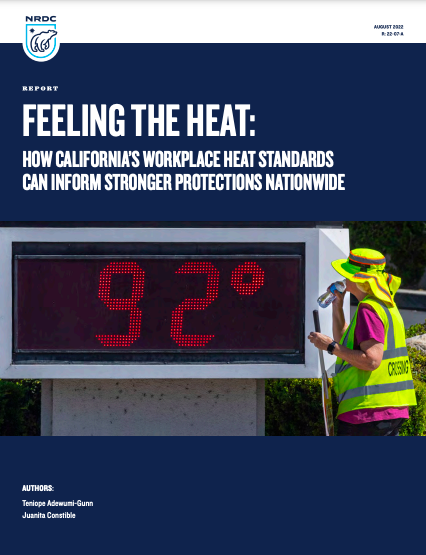Pies al Fuego: Normas laborales para el calor en California podrían inspirar protecciones firmes a nivel nacional
2022
Author(s): Juanita Constible, Teniope Adewumi-Gunn

Workers face a range of climate-related hazards on the job, but one of the most pressing and well-understood hazards is extreme heat. From agricultural and construction workers, who have the highest incidences of heat-related illnesses, to warehouse and other indoor employees working without adequate cooling or ventilation, heat impacts both indoor and outdoor workplaces. In fact, the Bureau of Labor Statistics Survey of Occupational Injuries and Illnesses estimates that from 1992 to 2019, more than 900 workers died and tens of thousands more were sickened due to extreme heat—though we know these numbers underestimate the real problem, due to underreporting.
Responsibility for protecting workers from extreme heat falls on employers and regulatory bodies, most notably the federal Occupational Safety and Health Administration (OSHA). However, the lack of a specific federal heat standard limits OSHA’s ability to address the dangers and prevent occupational heat stress. Without federal safeguards in place for heat, it falls on states to close the gap and develop enforceable heat stress regulations for workers.
Many states have modeled their safeguards after the robust California heat standard, and many advocates have suggested that any federal OSHA statute do the same. This report identifies areas in which the California heat stress standard—and any subsequent state or OSHA standards modeled after it—can be strengthened, using publicly accessible data on occupational heat-related inspections and citations over the last 15 years. This report also includes interviews with worker advocates and workers impacted by these heat policies and uses their experiences to inform recommendations on improving the California standard.



